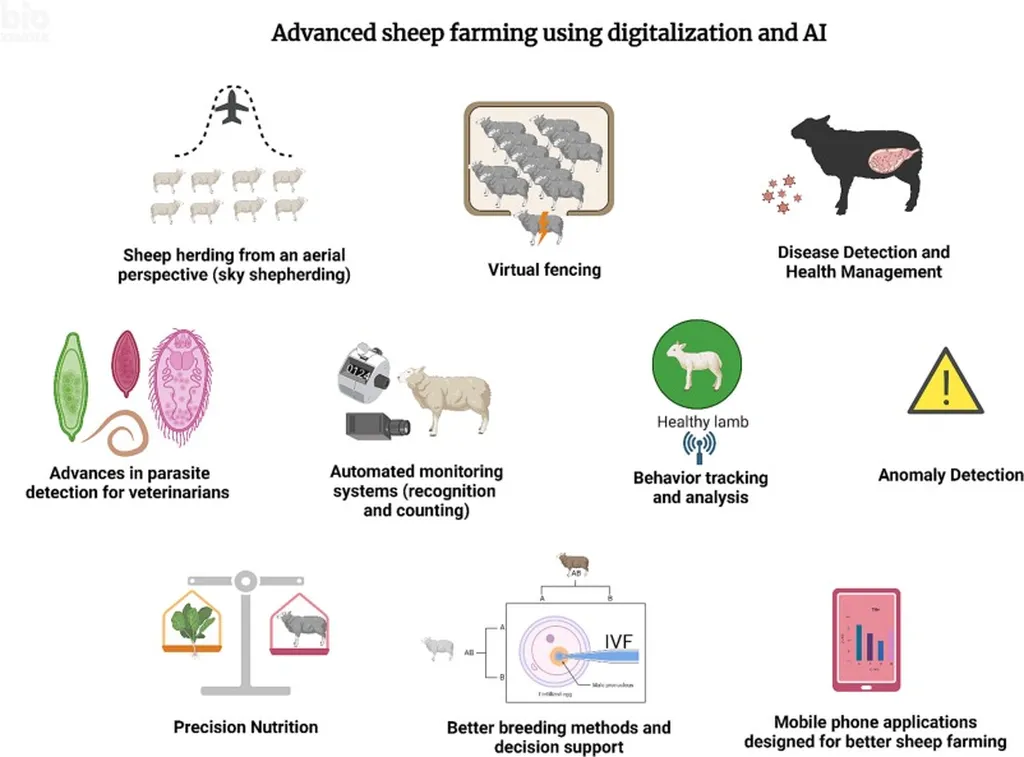In the heart of Turkey, researchers are revolutionizing livestock management with a novel approach that combines image analysis and machine learning. Cafer Tayyar Bati, a scientist from the Department of Animal Science at Van Yuzuncu Yil University, has developed a system that estimates the pose and body measurements of sheep using advanced algorithms. This innovation, published in the *Journal of Agricultural Engineering* (translated from Turkish as ‘Tarım Makinaları Dergisi’), could significantly impact the agricultural sector by enhancing animal welfare and precision farming.
Bati’s study focuses on three key sheep poses: grazing, standing, and sitting. Using 40 side-view videos for each pose, each lasting approximately 8 seconds, the research team trained a model to detect anatomical landmarks and estimate body measurements. “We wanted to create a system that could accurately monitor sheep health and behavior,” Bati explains. “By understanding their posture and body measurements, we can better assess their well-being and manage them more effectively.”
The team employed the YOLOv8 pose object detection framework for initial pose classification and keypoint training. These keypoints were then used to measure various body dimensions, creating a comprehensive dataset. Six different supervised machine learning algorithms were trained on this data to improve pose estimation. The results were impressive: the models performed exceptionally well on both side and frontal images, outperforming state-of-the-art networks like EfficientNet and Faster R-CNN.
The implications for the agricultural sector are profound. Accurate pose estimation and body measurement can support practical applications such as animal welfare monitoring, herd health assessment, and precision agriculture. “This technology can help farmers make data-driven decisions, ultimately improving the efficiency and sustainability of livestock management,” Bati notes.
The research highlights the potential for machine learning to transform traditional agricultural practices. By integrating advanced algorithms into livestock management systems, farmers can gain real-time insights into their animals’ health and behavior. This not only enhances animal welfare but also contributes to the broader goals of precision agriculture, where data and technology are used to optimize farming practices.
As the agricultural sector continues to evolve, innovations like Bati’s pose estimation system will play a crucial role in shaping the future of livestock management. By leveraging the power of image analysis and machine learning, farmers can achieve greater accuracy and efficiency, paving the way for more sustainable and productive agricultural practices. The study, published in the *Journal of Agricultural Engineering*, serves as a testament to the transformative potential of technology in agriculture.

